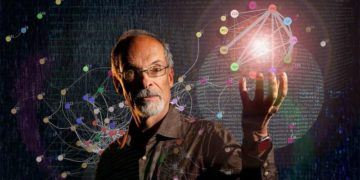Seth Stern in The Christian Science Monitor:
 A painful pattern repeats itself throughout America: A Black person is killed by police officers, protests ensue, and police are brought in to stifle the demonstrations. Most of the time, the protests against racial injustice are peaceful, but occasionally violence breaks out. Meanwhile, politicians do little to prevent the cycle from continuing.
A painful pattern repeats itself throughout America: A Black person is killed by police officers, protests ensue, and police are brought in to stifle the demonstrations. Most of the time, the protests against racial injustice are peaceful, but occasionally violence breaks out. Meanwhile, politicians do little to prevent the cycle from continuing.
The language surrounding that cycle is highly politicized. Elizabeth Hinton, a professor of history, African American studies, and law at Yale, drills down on the term “riot,” which she argues is a misnomer. In her book, “America on Fire: The Untold History of Police Violence and Black Rebellion Since the 1960s,” she suggests instead that violent protests are political acts best described as rebellions – “a sustained insurgency” against “an unjust and repressive society.”
This is a sequel of sorts to Hinton’s 2016 book, “From the War on Poverty to the War on Crime: The Making of Mass Incarceration in America.” There, Hinton showed how fears of violence prompted federal policymakers to build punitive, militarized urban police forces that filled prisons with Black inmates. In this equally impressive followup, Hinton chronicles how attempts to quell protests in American cities actually spawned more unrest.
More here.

 Proteins have been quietly taking over our lives since the COVID-19 pandemic began. We’ve been living at the whim of the virus’s so-called “spike” protein, which has mutated dozens of times to create increasingly deadly variants. But the truth is, we have always been ruled by proteins. At the cellular level, they’re responsible for pretty much everything.
Proteins have been quietly taking over our lives since the COVID-19 pandemic began. We’ve been living at the whim of the virus’s so-called “spike” protein, which has mutated dozens of times to create increasingly deadly variants. But the truth is, we have always been ruled by proteins. At the cellular level, they’re responsible for pretty much everything.